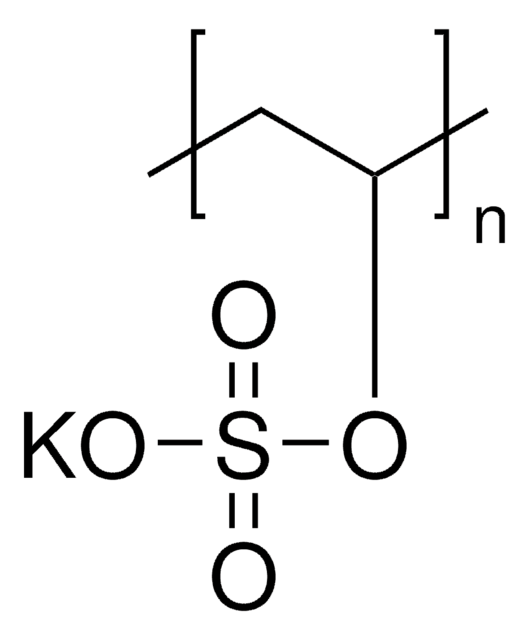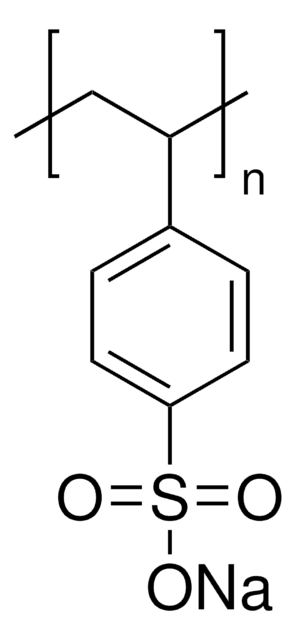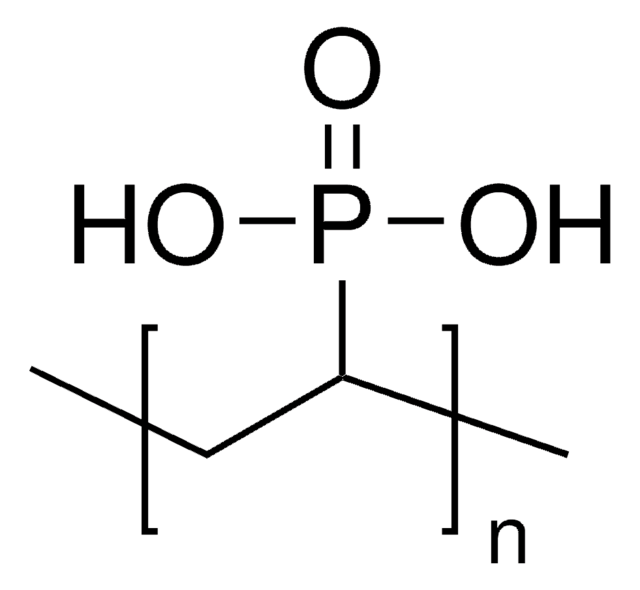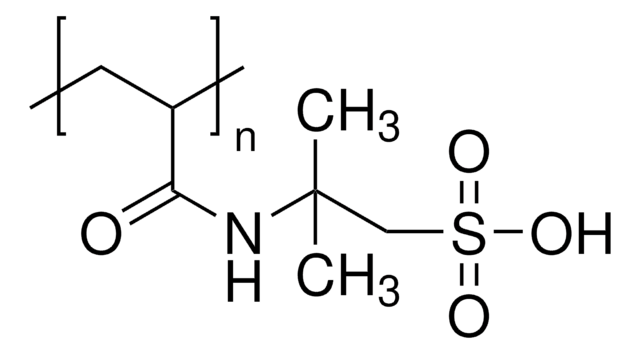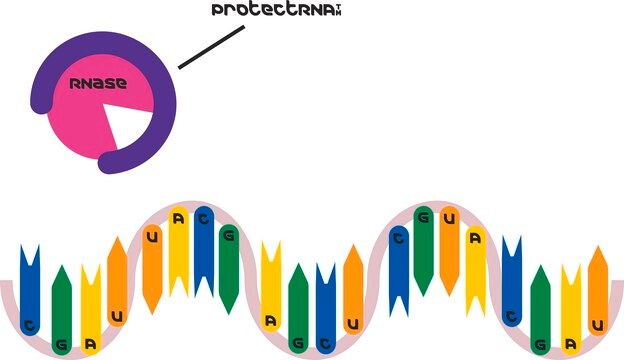Wichtige Dokumente
278424
Poly(vinylsulfonsäure, Natriumsalz) -Lösung
30-40 wt. % in H2O, technical grade
Synonym(e):
PVSA
About This Item
Empfohlene Produkte
Qualität
technical grade
Qualitätsniveau
Form
liquid
Konzentration
30-40 wt. % in H2O
Brechungsindex
n20/D 1.389
Dichte
1.267 g/mL at 25 °C
SMILES String
[Na]OS(=O)(=O)C=C
InChI
1S/C2H4O3S.Na/c1-2-6(3,4)5;/h2H,1H2,(H,3,4,5);/q;+1/p-1
InChIKey
BWYYYTVSBPRQCN-UHFFFAOYSA-M
Verwandte Kategorien
Anwendung
- Bei der Herstellung von superabsorbierendem Semi-IPN (interpenetrierendes Polymernetzwerk)-Hydrogel.
- Als fester Elektrolyt für die Protonenleitung bei der Herstellung eines vollmassiven Superkondensators.
- Als Kristallisationskontrollmittel bei der Herstellung von hochwertigen Kristallen von porösen Koordinationspolymeren (CP). PVSA reguliert nicht nur die Größe und Struktur der Kristalle, sondern auch deren bevorzugte Orientierung, was zu einer CP-Kanalausrichtung im Pulverschüttungszustand führt.
Signalwort
Warning
H-Sätze
Gefahreneinstufungen
Eye Irrit. 2 - Skin Irrit. 2 - STOT SE 3
Zielorgane
Respiratory system
Lagerklassenschlüssel
10 - Combustible liquids
WGK
WGK 3
Persönliche Schutzausrüstung
Eyeshields, Gloves, type ABEK (EN14387) respirator filter
Hier finden Sie alle aktuellen Versionen:
Besitzen Sie dieses Produkt bereits?
In der Dokumentenbibliothek finden Sie die Dokumentation zu den Produkten, die Sie kürzlich erworben haben.
Kunden haben sich ebenfalls angesehen
Artikel
Recently, layer-by-layer (LbL) assembly has emerged as a versatile, gentle and, simple method for immobilization of functional molecules in an easily controllable thin film morphology.1,2 In this short review, we introduce recent advances in functional systems fabricated by using the mild, yet adaptable LbL technique.
We present an article that discusses two applications in particular; first, using these layers as polyelectrolyte membranes to control permeability.
Global Trade Item Number
| SKU | GTIN |
|---|---|
| 278424-1L | 4061826203477 |
| 278424-250ML | 4061826203484 |
| 278424-5ML |
Unser Team von Wissenschaftlern verfügt über Erfahrung in allen Forschungsbereichen einschließlich Life Science, Materialwissenschaften, chemischer Synthese, Chromatographie, Analytik und vielen mehr..
Setzen Sie sich mit dem technischen Dienst in Verbindung.